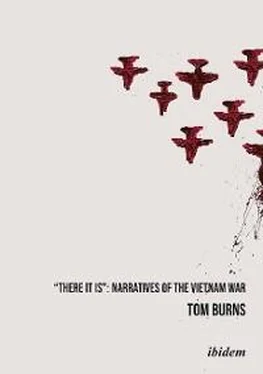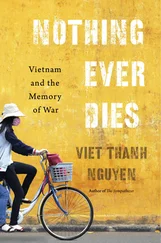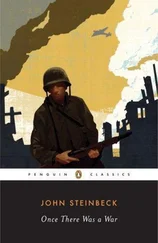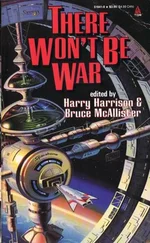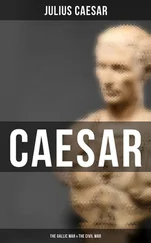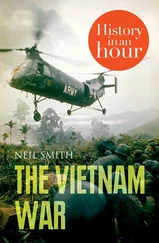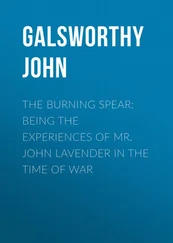Tom Burns - There It Is - Narratives of the Vietnam War
Здесь есть возможность читать онлайн «Tom Burns - There It Is - Narratives of the Vietnam War» — ознакомительный отрывок электронной книги совершенно бесплатно, а после прочтения отрывка купить полную версию. В некоторых случаях можно слушать аудио, скачать через торрент в формате fb2 и присутствует краткое содержание. Жанр: unrecognised, на английском языке. Описание произведения, (предисловие) а так же отзывы посетителей доступны на портале библиотеки ЛибКат.
- Название:There It Is: Narratives of the Vietnam War
- Автор:
- Жанр:
- Год:неизвестен
- ISBN:нет данных
- Рейтинг книги:5 / 5. Голосов: 1
-
Избранное:Добавить в избранное
- Отзывы:
-
Ваша оценка:
- 100
- 1
- 2
- 3
- 4
- 5
There It Is: Narratives of the Vietnam War: краткое содержание, описание и аннотация
Предлагаем к чтению аннотацию, описание, краткое содержание или предисловие (зависит от того, что написал сам автор книги «There It Is: Narratives of the Vietnam War»). Если вы не нашли необходимую информацию о книге — напишите в комментариях, мы постараемся отыскать её.
There It Is: Narratives of the Vietnam War — читать онлайн ознакомительный отрывок
Ниже представлен текст книги, разбитый по страницам. Система сохранения места последней прочитанной страницы, позволяет с удобством читать онлайн бесплатно книгу «There It Is: Narratives of the Vietnam War», без необходимости каждый раз заново искать на чём Вы остановились. Поставьте закладку, и сможете в любой момент перейти на страницу, на которой закончили чтение.
Интервал:
Закладка:
Earlier, on a walk through the streets of Haidho, Hillandale had astutely noted that astrologers and palmists in Sarkhan had offices that resembled those of fashionable doctors in the US and that their shingles outside these offices “all indicated that these practitioners had doctors’ degrees” (148), which reminds the Colonel that he has had the foresight to get his own diploma from the “Chungking School of Occult Sciences.” The opportunity for American mystical influence has been lost, however, for Swift, one of the “Ugly Americans,” has undone the efforts of someone who understands the Asian mind enough to use astrology for his purposes.
As Landsdale’s pupil and admirer, John Vann said, with unconscious racism: “Landsdale understood that Asians were people, that you could discern their desires and play upon those desires to your advantage.” 67Whether Landsdale had actually studied astrology is unclear, but like Hillandale he did make opportunistic use of it in his misinformation campaign in North Vietnam. One of Landsdale’s clandestine tactics for harassing the Hanoi government and encouraging emigration to the south was bribing astrologers to make the desired predictions. In the words of The Pentagon Papers : “In the South, the team hired Vietnamese astrologers—in whose art many Asians place great trust—to compile almanacs bearing dire predictions for the Vietminh and good omens for the new Government of Premier Diem.” 68
iv. M. J. Bosse, The Journey of Tao Kim Nam (1959)
Bosse’s novel, which deserves to be better known, has its starting point with the partition of Vietnam in 1954 into North and South Vietnam in accordance with the Geneva agreements. The novel shows how the division affected the lives of rural people from the north, leaving aside Euro-American viewpoints to give a sympathetic portrayal of Vietnamese characters caught in a social upheaval that they hardly understand but that profoundly disrupts their lives. Here, for example, is the protagonist, Nam, right after his arrival in Haiphong, from which he will embark southward. He is amazed that there are no sentries or barbed-wire in the city, and he wanders around town gawking at the buildings and well-dressed women:
He stared at passing soldiers. They had the long noses, indeterminable ages, indistinguishable faces of white men, and they talked the way they walked—briskly…Nam stopped in front of one house, pink and colonnaded, a Western house undoubtedly because it was four stories high. Fronting it was grass, a whole plot of earth wasted on unimportant grass. Here was land enough to provide for a family of ten. 69
With this technique of estrangement, the reader here becomes the foreigner, the other, seeing what would be a familiar kind of people, building, and yard through the protagonist’s eyes.
The narrative follows the classic pattern of the picaresque journey. The traveler is a resourceful young man, the eponymous hero known simply as “Nam,” as if he were representative of his country. It is also to the point that Nam often has to go by different names and play different roles, be now strong and decisive, now hesitant and deferential. The novel seems to be saying that bending to circumstance and improvising a proper role is necessary for these people struggling to survive under a succession of masters: French, Viet Minh, American, and South Vietnamese. The journey is hazardous, replete with material want, physical hardship, and psychological anxiety. Nam makes the classic metaphorical equation of a journey with life itself: “Nam gradually learns that the world was not a circle of peaceful days and nights, but it was more like the road itself, moving into the unknown” (225).
His journey consists of several stages: i) Nam’s departure from his native village and his murder of a guard; ii) the rigorous overland journey, punctuated by stops at villages along the way and marked by encounters with other people, mostly Catholics, who are trying to reach the ships that will take them south; iii) the sea journey from Haiphong to Saigon on an American ship; iv) the arrival in Saigon and his adventures there. The departure from Nam’s Catholic village, Ba Lang, is precipitated by the success of the Viet Minh in the war. The son of a mandarin landowner, Nam is literate and knows French. With his older brother in the priesthood, the family’s ten hectares of rice land would fall to him, an inheritance that would ensure his future as a farmer and the respect accorded him within the village. Nam is not a dreamer; he is content to follow traditional patterns of living, but when these patterns are radically disrupted by the war, he resigns himself to what life offers at the moment and tries not to regret things that he cannot control. Despite setbacks and losses that would drive many to despair, he never looks back.
How life is to be different under the Viet Minh is shown when his group enters the village. Political harangues, called “the Lesson,” are obligatory, and new taxes are levied, which the villagers do not understand: “unity contributions, and public subscriptions, and taxes for a thing called future development” (18). To undermine the power of the village priest, Nam’s brother, the time for hearing Mass is changed to coincide with the Lesson, by which the local Commissar means to suggest that the village church is no longer needed. The priest’s defiance brings on a threat to his life, symbolically in the form of a single chopstick—to be jabbed into his ear if he does not submit. He warns his brother Nam that his resistance will be paid not only by himself but by his whole family: “I am dead, I know that…And if you stay, you too are dead” (25). Nam must leave immediately; he is given money, a jade crucifix, and a piece of paper with instructions for the journey, which he is to memorize and then destroy. With great regret at leaving behind “the real wealth he had,” the family rice fields, Nam sets out on a journey that will take him first east, then north to Haiphong.
Immediately, he runs into trouble, in the form of a guard who demands le passeport , a document demanded of every traveler who strays far from his village. When the guard threatens to take him back, Nam reacts instinctively by killing the man with a knife. By this act, he is fatally committed to the journey south, like it or not: “Why would so many people have reason to go to Haiphong? He had none, not really, until he had killed the guard” (35). Many of the people who share Nam’s journey from north to south are Catholics who were urged by their priests to leave, who were even told that Jesus Christ and the Virgin Mary had “gone south” (as one of Landsdale’s rumor campaigns actually put it). These people feared mistreatment or reprisals by the Viet Minh as well as by those people who remained, a well-founded fear on the evidence of the novel.
The second phase of the narrative begins with Nam on the road, a long journey on foot, and, in the later stages, by bus and boat (his progress can be followed on a map on the inside cover of the first edition, marked off by the names of the villages he reaches). There are frequent checkpoints, which show how completely the Viet Minh control the northern countryside. At the first, he has to lie about his origins to conceal his real identity, but the soldier does not believe him: “You smell only of manure, not fish, and your tongue is sharper than any fisherman’s” (43). Nam bribes the man; the Viet Minh soldiers encountered along the way are usually peasants, who are often corrupt and cruel, but rarely stupid.
At Vinh, the local people are hostile toward the refugees, calling them “traitors,” and the newcomers are herded into a compound, where pressure is brought to bear to make them give up and go home. A rousing patriotic rally is held in the square in front of the compound. The refugees are given no food and an offer of a water buffalo is made to anyone who goes back to his native village. A former tradesman, who explains that he is going south, “where the piastres are,” because the north is no longer “the weather for a merchant” (50), tells Nam that this offer is a ruse—it is always the same men who take up the offer. The narrative has a number of episodes that mean to show the continuous attempts of the Viet Minh to secure the people on the land, discouraging the exodus by patriotic appeals as well as deceit and outright force.
Читать дальшеИнтервал:
Закладка:
Похожие книги на «There It Is: Narratives of the Vietnam War»
Представляем Вашему вниманию похожие книги на «There It Is: Narratives of the Vietnam War» списком для выбора. Мы отобрали схожую по названию и смыслу литературу в надежде предоставить читателям больше вариантов отыскать новые, интересные, ещё непрочитанные произведения.
Обсуждение, отзывы о книге «There It Is: Narratives of the Vietnam War» и просто собственные мнения читателей. Оставьте ваши комментарии, напишите, что Вы думаете о произведении, его смысле или главных героях. Укажите что конкретно понравилось, а что нет, и почему Вы так считаете.
